
The Present indefinite tense definition, structure and examples
Present indefinite tense is also known as present simple tense.. This tense is used to express an action that occurs in the present time. These actions include habitual or repeated actions, scheduled actions occurring on regular basis, and facts that stand true all the time.. The following examples express actions generally occurring on regular basis.
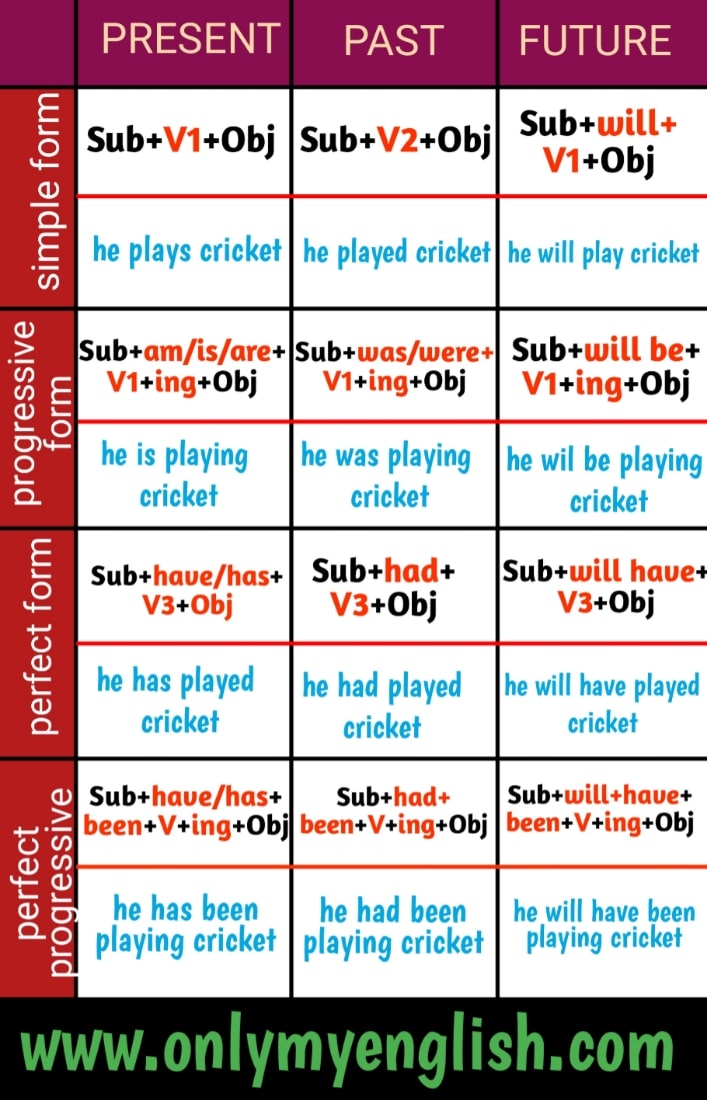
Tense Chart with Rules Examples & Formula »
General truths: The Present Indefinite tense is used to express facts, general truths, and universal statements. For example: "The sun rises in the east.". Habits and routines: It is used to describe actions or activities that are habits or routines. For example: "She drinks coffee every morning.". Scheduled events: The Present.

Simple Present tense (Indefinite tense) Simple present tense, English vocabulary words
Follow the below structure to create a Simple or Affirmative sentence of the present Indefinite Tense : Subject + Verb - Ist + s / es + Object + Others. Subject + Verb - Ist + Object + Others. It is to be noted here that the use of s / es with the Ist Form of Verb is mandatory for Singular Subject.

Present Indefinite Tense Rules Tenses rules, Simple present tense, Tenses
The Present Indefinite Tense is used to state facts, general truths, or things that are universally true. Here are some examples: Water boils at 100 degrees Celsius. The sun rises in the east. Water freezes below zero degrees Celsius. The Earth orbits around the sun. Sound travels faster than light.
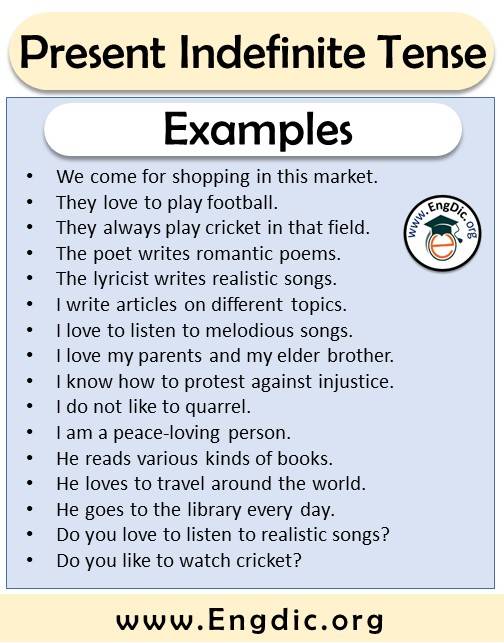
Present Indefinite Tense EngDic
Rule 06: Expressing Daily Activities/ Regular Habit/ Facts. Rule 07: Expressing Universal or Historical Truth. Rule 08: Near Future / Future Time Markers. Rule 09: Re-addressing Past Events. Rule 10: Discussing about Movie, Drama or Novel Story. Present Simple Tense Exercises. Present Simple/ Indefinite Tense Summary.
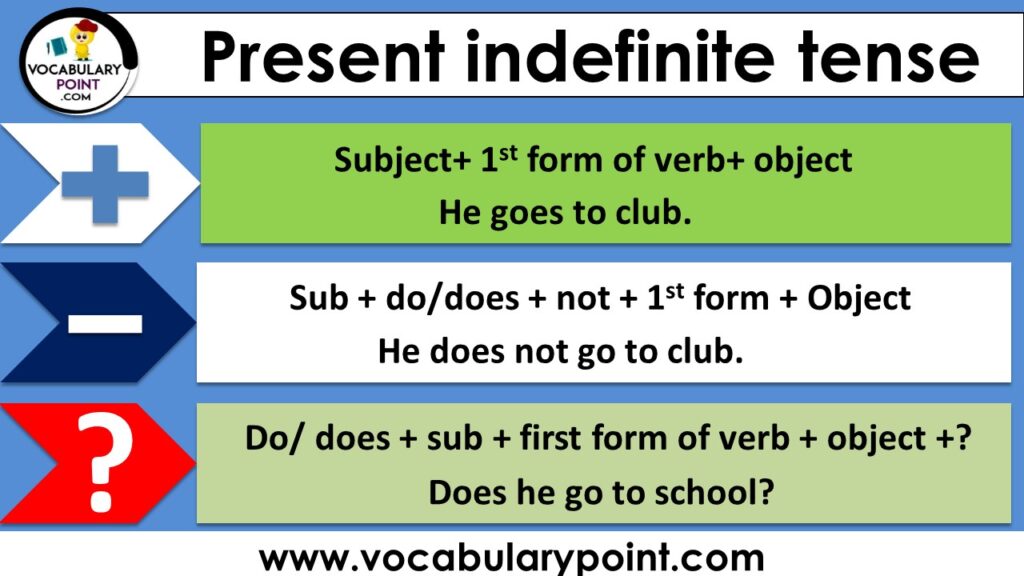
Present Indefinite Tense Examples, sentences & formation Vocabulary Point
Present indefinite tense is a verb tense. It is used for actions that occur habitually or repeatedly at an unspecified moment that happens in the present. This tense can be used to talk about recurring actions. The present indefinite tense is used to express actions or states that are always true. It is also used for general truths and for.
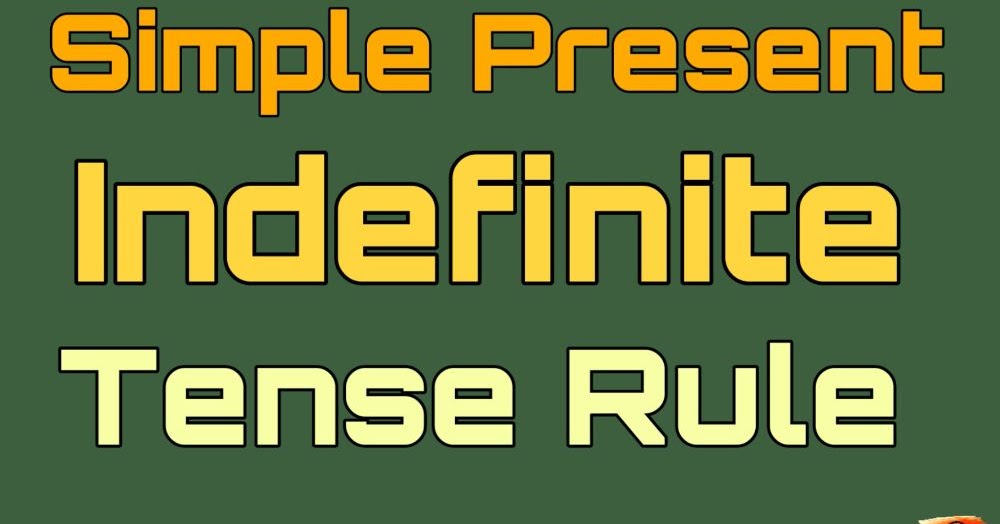
Simple Present Indefinite Tense Rule in Hindi With Examples and Sentences
The simple present is a verb tense with two main uses. We use the simple present tense when an action is happening right now, or when it happens regularly (or unceasingly, which is why it's sometimes called present indefinite). Depending on the person, the simple present tense is formed by using the root form or by adding s or es to the end.

Present Indefinite Tense Definition , Example Sentences Engrabic English transition words
Present indefinite tense expresses all universal truths. Present simple tense always reveals all kinds of eternal truths and facts. Examples-. The sun rises in the east. Water has no color. Man is mortal. The sky is blue. The moon has no own light. There is no destruction of energy.
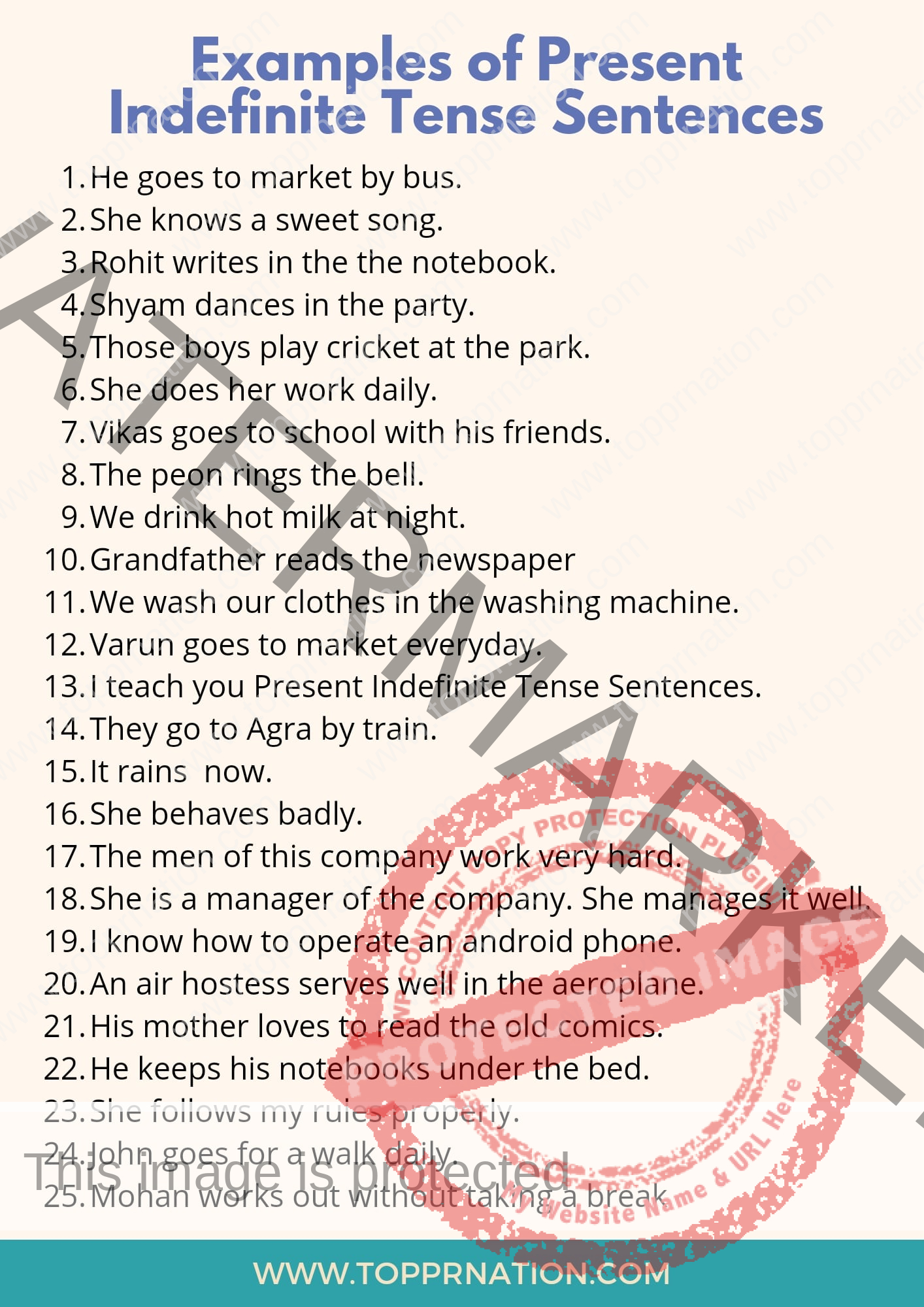
Examples of Present Indefinite Tense Sentences (Simple Present Tense)
Present Perfect Tense. Present Perfect Continuous Tense. Subject + Verb in the base form/third person plural form + the rest of the sentence. Subject + H elping Verb (am/is/are) + Main verb+ing + the rest of the sentence. Subject + Helping Verb (have/has) + Past participle of the main verb + the rest of the sentence along with the time frame.
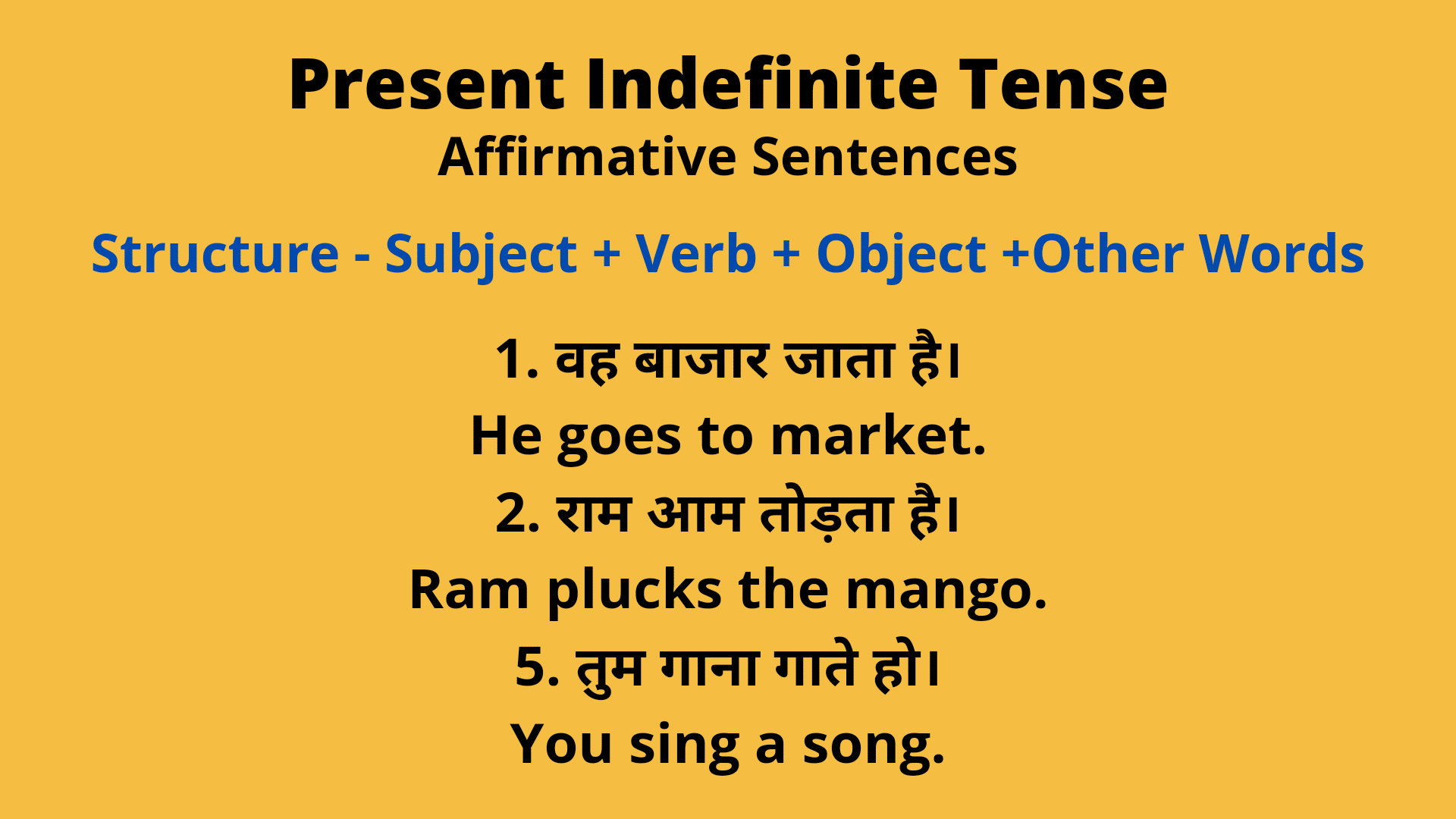
Present Indefinite Tense in Hindi Rules, Examples Exercises
The structure of the verb to be is given below. How to make Present Indefinite Tense Sentence with 'Verb To Be'. Rule -1 If the subject is he, she, it, or any singular noun, use 'is'. Rule - 2 If the subject is you, we, they, or plural noun, use 'are'. Rule - 3 'Am' is used with the subject I.

Pin on English Grammar
Present Indefinite Tense, Rules, Structure, examples |Basic English Grammar This is the first video on Tense. In this video I tried to explain the topic 'Pre.
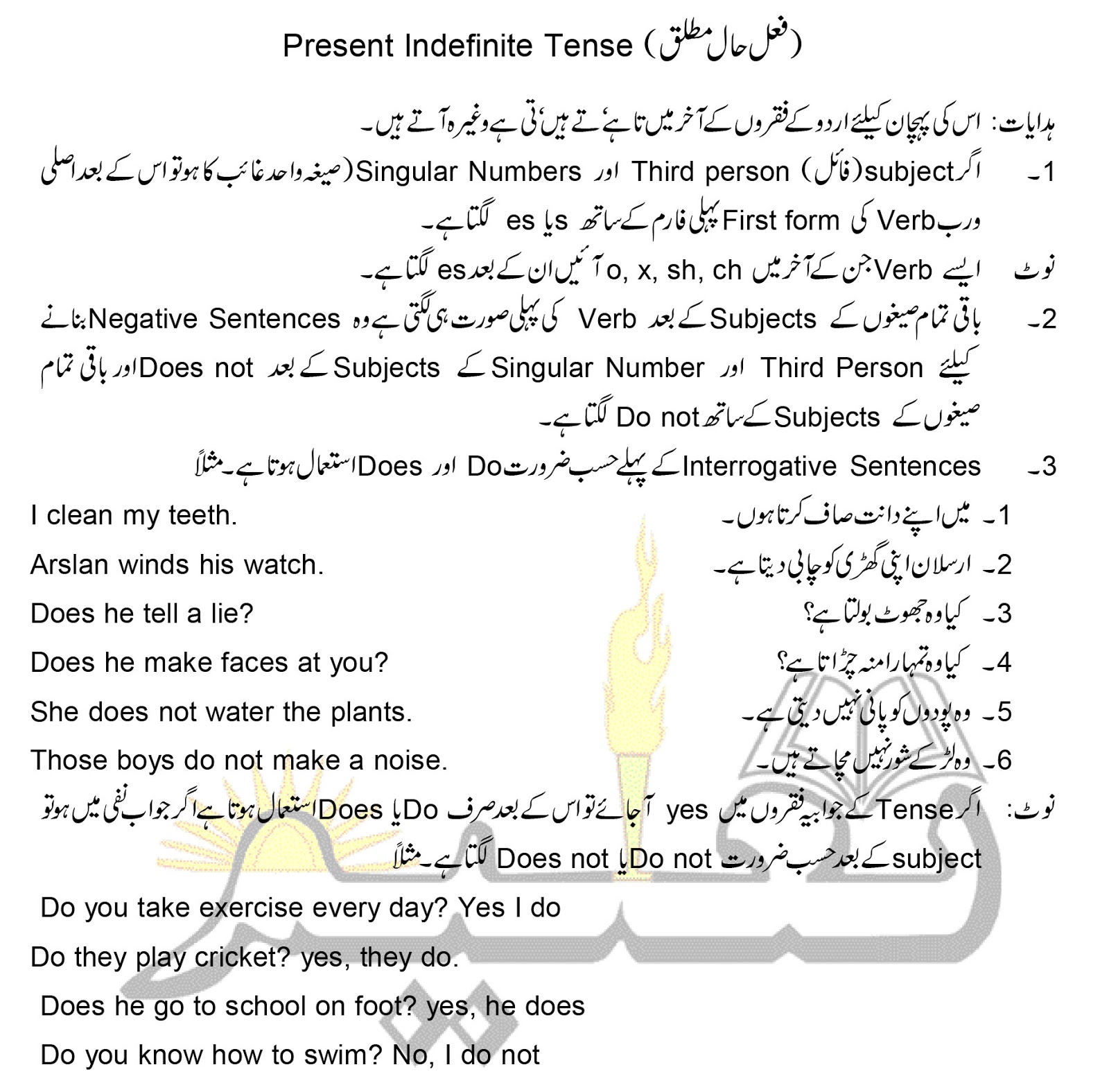
Online Taleem Present Indefinite Tense
Step 3: Learn where you can use this tense. Present Indefinite Tense definition and examples: The simple present tense in English describes a regular, actual or normal action. Present Indefinite Tense (Affirmative sentences) Present Indefinite Tense Uses: 1. For Universal Truth: The Earth revolves around the sun. The sun rises in the east.
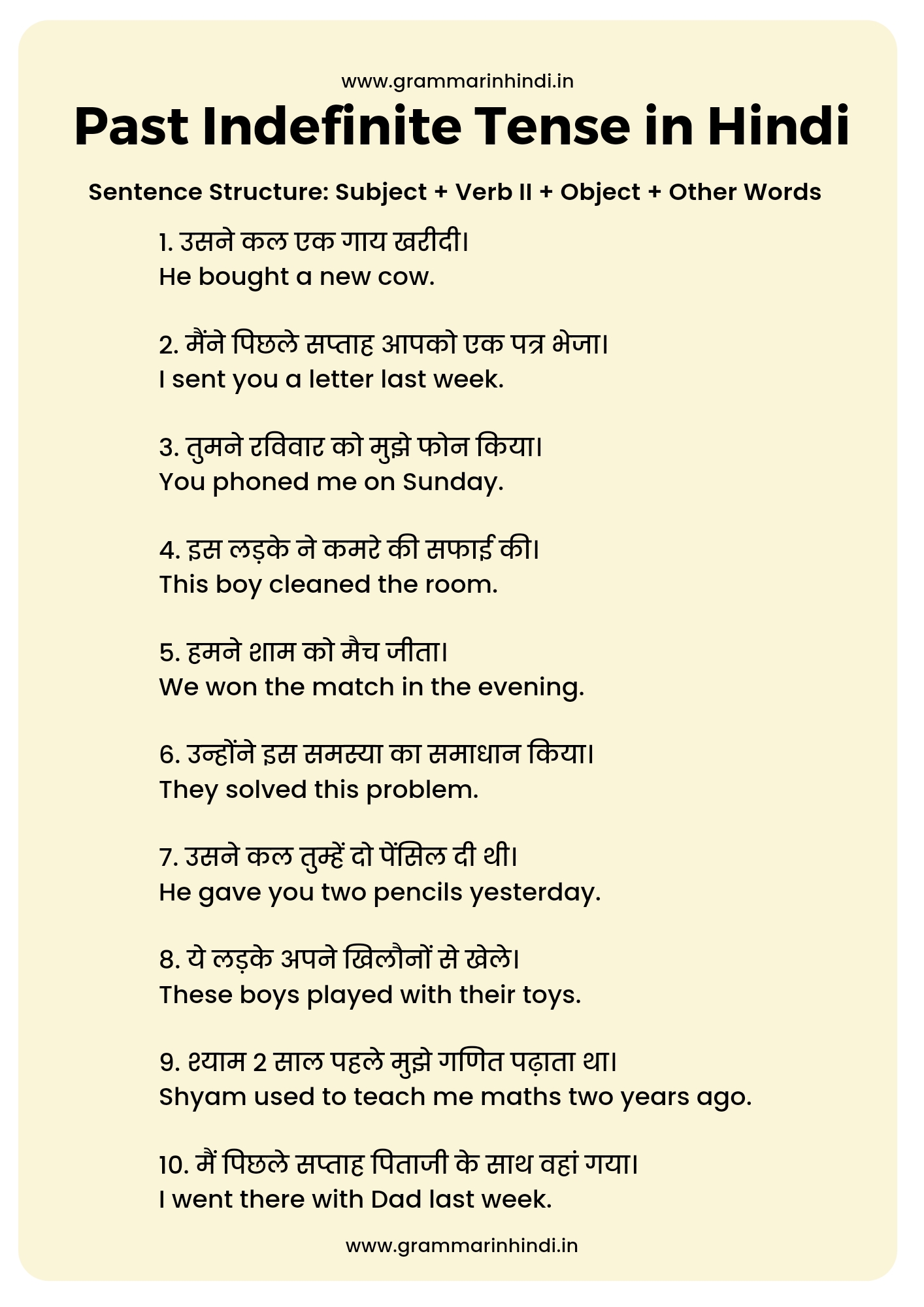
Past Indefinite Tense in Hindi Rules, Examples and Exercises
Try to make sentences of this tense and use in your daily life. We have written some examples of this in this post that may give you an idea of making sentences of Simple Present Tense. WhatsApp. Messenger. Present Continuous Tense Rules & Examples (Present Progressive Tense) January 10, 2023. February 15, 2021January 10, 2023.
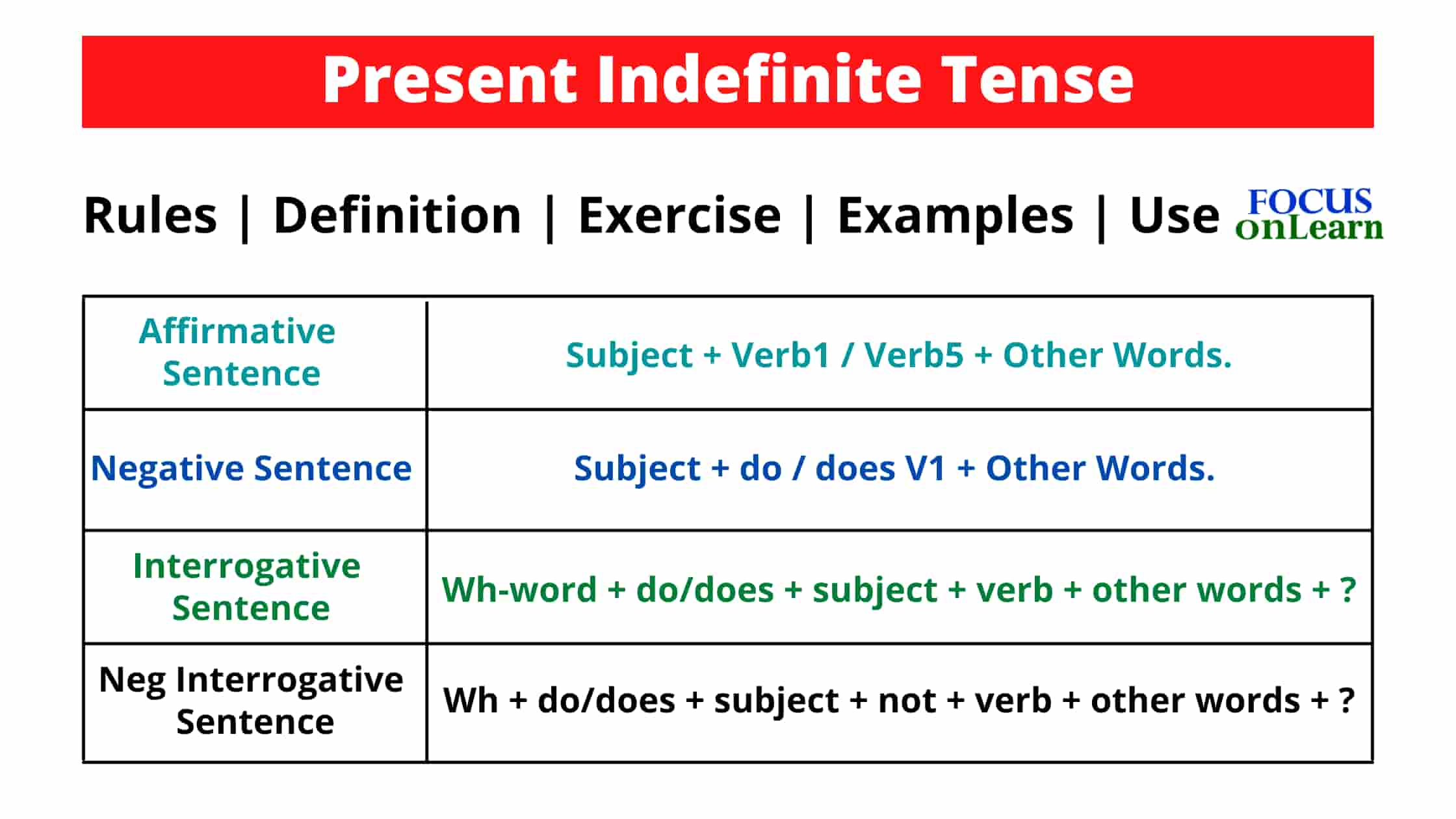
Present Indefinite Tense in Hindi All Rules, Examples
Rule 1. In the Present Indefinite Tense, we use the 1st form of verb + s/es with He, She, It and Name. e.g. These examples will help you understand this. He watches videos on Youtube. (mein Youtube par videos dekhta hu) She uploads selfies on Instagram. (Vo Instagram par selfies daalti hai) It rains every day. (Har roz barish hoti hai.)
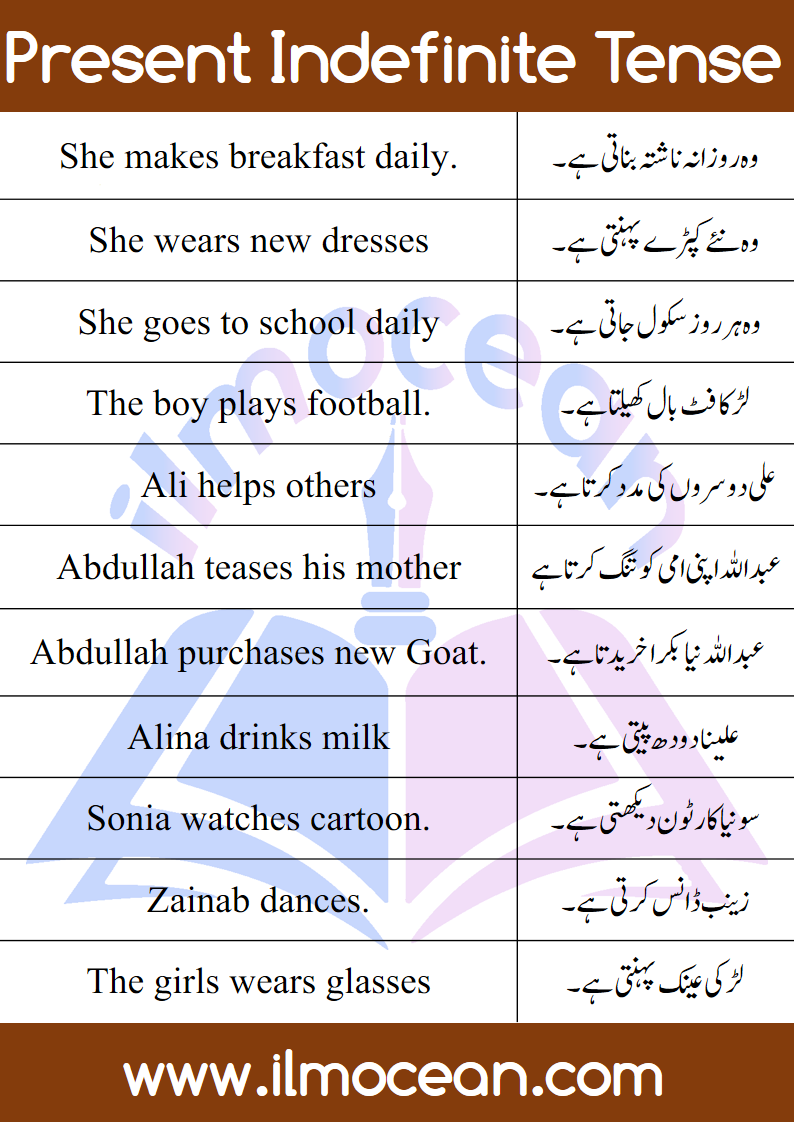
Present Indefinite Tense in English and Urdu Examples and Structures
The simple present, the simple past, and the simple future tense are called indefinite tense. The term 'Indefinite tense' is hardly used while talking about tenses. We use 'simple tense' instead. Simple tense or indefinite tense is used to state habitual actions or universal truths or facts. It does not specify if the action is complete.

simple present tense, present indefinite tense, English Learning Spoken, Learn English Words
Universal facts/truths. We commonly use the Present Indefinite tense to talk about the things that are universal facts, already proven. Here are some examples: The sun rises in the east. Plants give us oxygen. Water freezes at zero degree celsius. Narendra Modi is the Prime Minister of India. 3. Likes and dislikes.